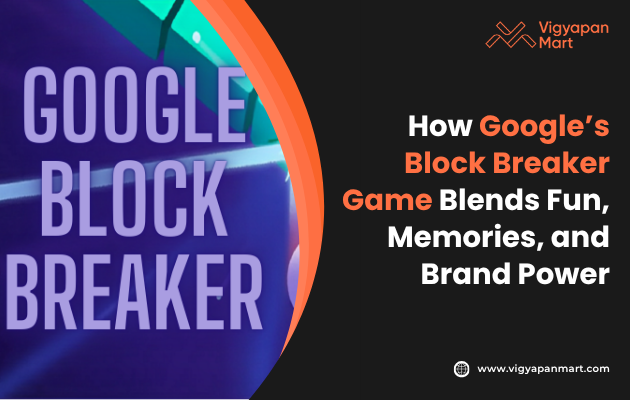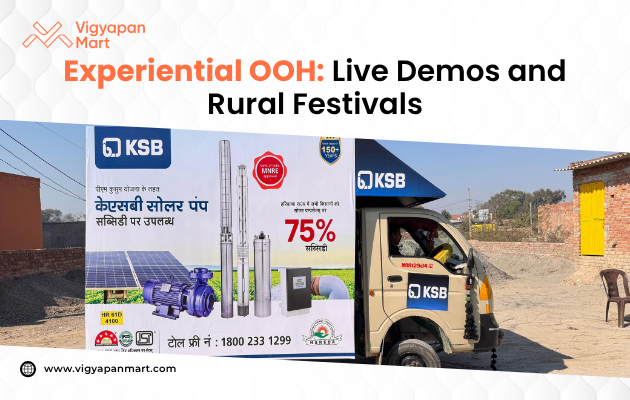How Does Experiential Marketing Differ from Traditional Marketing?

Marketing and advertising is essential for any business to thrive in the market. There are so many options available in the market. But among all of the available options, experiential marketing, and traditional advertising stand out as two popular approaches. Traditional marketing involves promotion and advertising methods, such as print, radio, TV, and online ads. Notably, these ads deliver a one-way message and reach a mass audience. Experiential marketing, however, focuses on creating memorable, interactive experiences for customers to build lasting impressions and stronger brand relationships.
While both strategies aim to connect with consumers, they differ significantly in their approach, interaction, and impact.
Defining Traditional Marketing
Traditional marketing uses common advertising and promotional methods. These include billboards, flyers, print ads, television commercials, and online banner ads. All these methods reach mass audiences and effectively raise brand awareness. Traditional outdoor marketing delivers a one-way message to mass audiences. One of the most fascinating abilities of traditional marketing is reaching thousands of audiences and capturing consumer attention. Traditional marketing often highlights a product's features and benefits, appealing to the consumer's rational side. They use high-quality, bold imagery, and concise messages that aim to trigger emotions in the viewers.
Defining Experiential Marketing
Experiential marketing takes a different route in advertising a brand’s products or services. Instead of sharing the messages only, they emphasize creating interactive experiences that engage consumers and forge emotional connections. Experiential marketing generally includes events, pop-up shops, live demonstrations, and immersive installations. These events invite consumers to participate directly with a brand, fostering a sense of personal connection. These campaigns often aim to evoke emotions and create lasting memories. Instead of passively receiving a message, consumers actively engage with the brand. This leads to a more profound and memorable experience for audiences.
The Benefits of Experiential Marketing
Experiential marketing provides several advantages over traditional methods:
- Memorable: Experiential marketing creates lasting memories that consumers are more likely to recall than traditional ads.
- Personal: Experiences allow for engagement on a personal level, fostering stronger relationships.
- Engaging: It encourages interaction with a brand, making the experience more meaningful.
- Word-of-mouth: It generates buzz and encourages people to talk about their experiences.
- Emotional Connection: Appeals to consumer emotions, creating a stronger bond with the brand.
- Measurable: Experiential marketing campaigns are measurable, allowing businesses to track success and adjust strategies.
Key Differences between Traditional and Experiential Marketing
Experiential marketing and traditional marketing differ in approach, focus, messaging method, and morality. Here is a brief comparison between both.
Integrating Both Strategies
While experiential marketing offers unique advantages, it doesn't necessarily replace traditional marketing. The most effective approach often involves integrating both strategies and creating a comprehensive marketing plan. Traditional marketing can build brand awareness and reach a broad audience, while experiential marketing can create deeper engagement and loyalty. For example, a brand can advertise its new launches through TV ads and host a show for the audience to experience the products firsthand.
The Online Factor
No one can deny the immense power of the internet. Once you touch the right button, it can bring you hundreds of thousands of views. All you need to do is to create something different. Where traditional marketing uses banners, hoardings, billboards, flyers, posters, and TV & radio ads, experiential marketing engages the audience in an event. Here is your chance to shine. Try to create an ad or an event that can go viral.
Lose all the strings and go creative. Use a modern-day approach in your outdoor advertisement like Zomato, Cadbury, or Amul. Do experiential marketing like Nike, Apple, or, Red Bull. Have fun with the advertisements, create something goofy or exciting, let the audience participate, and foster a community.
Conclusion
Experiential marketing distinguishes itself from traditional marketing by prioritizing consumer engagement, personalized experiences, and emotional connections. While traditional marketing is valuable for broad reach and brand awareness, experiential marketing offers a more immersive and memorable approach. But the question remains- which one should you choose? By understanding the strengths of both strategies, businesses can create comprehensive marketing plans for both marketing methods.
Looking for an outdoor advertising agency for launching your next viral campaign? Look no more. Book a consultation meeting with Vigyapan Mart today.









